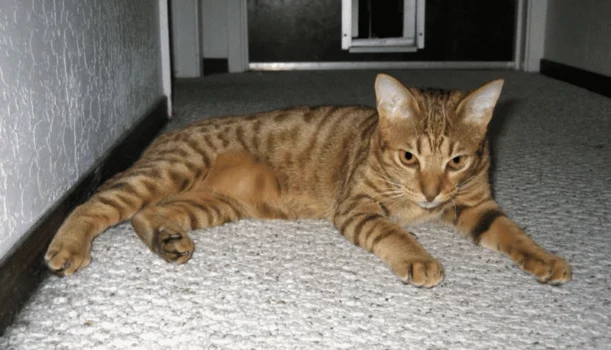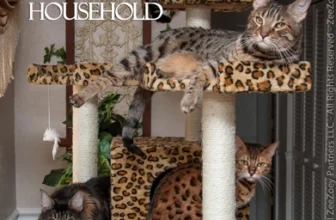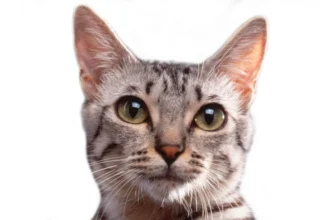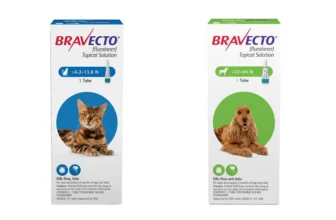Introduction

Your California Spangled is more than just a feline companion, it’s a member of the family. As part of that family, you want to ensure their health and well-being are taken care of, including their dental health. Brushing your cat’s teeth may seem like a daunting task, but it’s an important part of their overall care. In this article, we’ll explore why brushing your California Spangled’s teeth is important, how to prepare for brushing, methods and techniques for brushing, tips for success, and additional dental care to keep your feline friend’s teeth healthy and strong. So, let’s dive in and get started!
Why Brushing Your California Spangled’s Teeth is Important
Good oral hygiene is just as important for cats as it is for humans. As a pet owner, it’s important to understand why brushing your California Spangled’s teeth is a crucial part of their overall health routine. Here are some reasons why dental care for your feline friend should not be neglected:
- Prevents dental diseases: Just like humans, cats can develop dental diseases, such as periodontal disease, gingivitis, and cavities, if their teeth are not properly taken care of. If left untreated, these diseases can cause pain, bleeding, and even tooth loss.
- Improves overall health: Dental diseases in cats not only affect their teeth and gums but can also lead to other health issues, such as heart, liver, and kidney disease. By ensuring your California Spangled’s teeth are cleaned regularly, you are reducing the risk of these additional health problems.
- Saves money: Maintaining a regular dental routine for your cat can help you save money in the long run. Preventive dental care, such as brushing and regular checkups with the veterinarian, is much less expensive than treating dental diseases that have advanced.
Taking care of your cat’s dental health may seem like an overwhelming and daunting task, but it is essential for their overall well-being. Neglecting their dental care can lead to dental diseases, which can have long-term effects on their health. So, take charge of your cat’s dental care routine to help them live a happy and healthy life.
How to Prepare for Brushing Your Cat’s Teeth

One of the most important aspects of maintaining your California Spangled’s oral health is to brush their teeth regularly. However, it’s important to prepare your cat for this activity in order to make it a positive experience for both of you. Ensuring that you have all the necessary supplies on hand and properly introducing your cat to the toothbrush are just some of the steps you can take to prepare. By taking the time to properly prepare, you can help make brushing your cat’s teeth a routine part of their dental care. To ensure your cat’s dental health is in top condition, regular check-ups at the veterinarian’s office, as well as providing the best dental products for your feline friend, are also important. Read on to discover some tips and tricks on how to prepare for brushing your California Spangled’s teeth.
Gather Your Supplies
When it comes to keeping your California Spangled’s teeth healthy, the first step is to gather all the necessary supplies. Having the right tools will make the process easier and more efficient. Here are some of the essential supplies you’ll need:
| Item | Description |
| Toothbrush | A toothbrush designed specifically for cats’ teeth. These typically have softer bristles and a smaller head than human toothbrushes. |
| Toothpaste | A toothpaste that is safe for cats to swallow and specifically formulated for felines. Do not use human toothpaste, as it can be harmful to cats. |
| Finger brush | If your cat is not comfortable with a traditional toothbrush, a finger brush can be a good alternative. It fits over your finger and is made of gentle, rubbery material. |
| Treats | Having a few treats on hand can help make the experience more enjoyable for your cat. |
Getting these supplies ahead of time and keeping them organized will help streamline the process of brushing your cat’s teeth.
It’s also important to note that dental checkups are essential for maintaining your California Spangled’s oral health. While regular brushing is a great start, it’s important to have your cat’s teeth professionally cleaned at least once a year. Your veterinarian can recommend the best dental products for your cat and help you develop a dental wellness plan that works for your pet’s specific needs.
Introduce Your Cat to the Toothbrush
The introduction of the toothbrush to your California Spangled cat should be done gradually and with patience. Start by introducing your cat to the toothbrush without any toothpaste on it. Use a soft-bristled toothbrush as it will be gentle on your pet’s teeth and gums. Before using it on your cat, put some food or catnip scent on the toothbrush, so your cat gets used to it and accepts it as a normal part of their routine. Here are some more tips on how to introduce your California Spangled cat to the toothbrush:
- Let Your Cat Sniff the Toothbrush: Cats are curious animals, and they will want to investigate the toothbrush. So before even attempting to use it, let your cat sniff it and get used to its smell and shape.
- Use Praise and Treats: Positive reinforcement can go a long way in getting your cat to accept the toothbrush. Praise your cat and give them a treat every time they show an interest in the toothbrush. This will encourage them to keep exploring and engaging with it.
- Start Slowly: Begin by gently rubbing the toothbrush along your cat’s gums and teeth. Do this for a few seconds and then reward your cat with praise and a treat. Gradually increase the time you spend brushing your cat’s teeth over several days as your cat becomes more comfortable with the process.
- Be Patient: It’s crucial to realize that it may take some time before your California Spangled cat becomes accustomed to having their teeth brushed. Be patient and take breaks if your cat seems anxious or stressed. It’s better to go slowly and build trust with your furry friend.
Remember, introducing a new routine to your California Spangled cat takes time and patience. However, all of your efforts will be worth it in the end when you see your cat’s sparkling clean teeth. Once you have introduced the toothbrush successfully, the next step is to learn the different brushing techniques that will help you to clean your cat’s teeth effectively.
Methods and Techniques for Brushing Your Cat’s Teeth
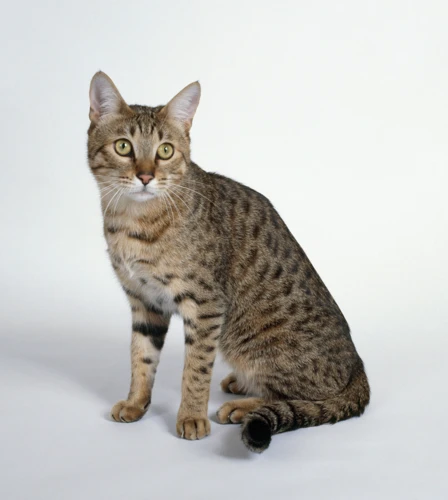
While brushing your California Spangled’s teeth might seem like a daunting task, it is possible to make the process go smoothly with the right methods and techniques. There are several ways to approach brushing your cat’s teeth, and it’s important to find the one that works best for both you and your feline friend. Let’s explore some of the methods and techniques that you can use to keep your California Spangled’s teeth healthy and clean. To ensure your cat’s dental health, read our guide on dental wellness for California Spangled cats.
The Finger Brush Method
Cats can be particular about what goes into their mouths, but the finger brush method can be a simple and effective way to brush their teeth. To start this method, first, choose the right finger brush. It should fit snugly on your fingertip for control and comfort. Before starting the cleaning, make sure your California Spangled is in a relaxed state. You don’t want to risk getting accidentally bitten or scratched during the cleaning process. Once your cat is calm, you can begin by following these steps:
- Put Toothpaste on the Brush: Squeeze a small amount of cat-specific toothpaste onto the finger brush. Avoid using human toothpaste, as it contains ingredients like fluoride that are dangerous for cats to ingest.
- Open Your Cat’s Mouth: Gently take hold of your cat’s muzzle with your free hand. Gently tilt their head back and open their mouth by applying gentle pressure to the sides of their cheeks.
- Gently Brush the Teeth: Once your cat’s mouth is opened, you can begin by placing the finger brush inside your cat’s mouth. Gently brush each tooth in a circular motion, making sure to cover the front and back. Focus on the gum line, which is where plaque tends to accumulate the most.
- Stay Calm: Speak soothingly to your cat during the brushing process to help keep them calm. If they start to get agitated, don’t force the issue. Try again later or try a different method.
Remember, just like with any new task, the finger brush method takes practice to master. Don’t give up if your California Spangled is resistant at first. With regular brushing and patience, they’ll become more comfortable with the process and their dental health will thank you for it.
If you notice any issues with your cat’s dental health, such as bad breath or signs of pain, you should take them for a dental checkup as soon as possible. Regular dental cleanings and care are essential to maintaining your cat’s dental health and preventing dental diseases.
The Traditional Toothbrush Method
The Traditional Toothbrush Method involves using a regular toothbrush specifically designed for cats. This method is more effective than the Finger Brush Method, but it also requires more patience and cooperation from your California Spangled. Here are the steps for using the Traditional Toothbrush Method:
- First and foremost, make sure to use a toothbrush and toothpaste designed specifically for cats. Human toothpaste contains fluoride, which is toxic to cats. Cat toothpaste comes in a variety of flavors, like chicken and fish, to make tooth brushing more enjoyable.
- Start by letting your cat smell and inspect the toothbrush and toothpaste. Let them get used to the smell and taste before you begin brushing their teeth.
- Sit with your cat in a comfortable position, either on your lap or on a countertop, and gently lift their lip to expose their teeth.
- Using gentle circular motions, brush along the gum line from back to front. Focus on the outer surfaces of the teeth, as that is where plaque and tartar buildup is most common.
- Be gentle and patient as you brush your cat’s teeth. If they become agitated or stressed, take a break and try again later.
- Finish by praising your cat and giving them a treat. Positive reinforcement will help make tooth brushing a more positive experience.
It’s important to note that the Traditional Toothbrush Method should only be used once your cat has become comfortable with the Finger Brush Method. If your cat is still showing resistance or discomfort, stick to the Finger Brush Method for a while longer and gradually work your way up to the Traditional Toothbrush Method.
Remember to brush your cat’s teeth at least three times a week to maintain good dental health and prevent the onset of dental diseases. If you notice any signs of dental problems, such as bad breath, swollen or bleeding gums, or loose teeth, schedule a dental checkup with your veterinarian as soon as possible. Regular dental cleanings with your veterinarian and incorporating dental chews and treats can further help maintain your California Spangled’s dental health. Check out our article on the best dental products for your California Spangled cat for more tips and information.
Tips for Successfully Brushing Your Cat’s Teeth

With the preparations in place, it’s time to start brushing your California Spangled’s teeth. However, as with any new experience, it may take some time for your cat to adjust to the process. It may take a few attempts before your California Spangled is comfortable with the brushing routine. With patience and following several tips and tricks, you can successfully brush your cat’s teeth and promote their dental health. Let’s explore these tips below.
Be Consistent
Regular and consistent brushing is key to maintaining your California Spangled’s dental health. Consistency is important because it ensures that your cat’s teeth are cleaned regularly and that any potential dental issues are caught early. It is recommended to brush your cat’s teeth at least once a day, but even two or three times a week can make a difference.
To help you stay consistent, create a schedule for your cat’s brushing routine. Choose a time that works for both you and your cat, such as after mealtime or before bedtime. Stick to this schedule as best as possible to establish a routine.
It’s also important to keep track of your cat’s dental health over time. Keep notes of any changes you see in their teeth or gums, as well as any difficulty your cat may have with brushing. This will help you know when it’s time to schedule a dental cleaning with your veterinarian if necessary.
Using positive reinforcement during brushing sessions can also help with consistency. Reward your cat with treats or praise for their good behavior during the brushing process. This will help make brushing a positive experience for them and encourage them to cooperate in the future.
Remember that consistency is key to maintaining your California Spangled’s dental health. Stick to a brushing routine, keep track of changes, and use positive reinforcement to make the process successful. For more information on your cat’s dental health, consider scheduling regular dental checkups with your veterinarian.
Make it a Positive Experience
When brushing your California Spangled’s teeth, it is important to make the experience as positive as possible to ensure your cat’s cooperation. As mentioned previously, start by slowly introducing your cat to the toothbrush and toothpaste so that they feel comfortable with these items before beginning to brush their teeth. Here are some additional tips to make the experience a positive one:
| Tips | Explanation |
|---|---|
| Use a treat as a reward | After brushing your cat’s teeth, reward them with a small treat to associate this experience with something positive. |
| Start slow and be patient | Brush only a few teeth at a time and gradually increase the number as your cat becomes more comfortable with the process. |
| Verbal praise | Verbal praise can go a long way in making the experience more positive. Use a soothing voice and offer positive reinforcement throughout the process. |
| Make it a bonding experience | Use the time you spend brushing your cat’s teeth as a chance to bond with your pet. Talk to them soothingly, pet them gently, and make sure they feel safe and secure. |
By implementing these tips, you can help make brushing your California Spangled’s teeth a more positive experience for both you and your cat. Remember to be patient and consistent, as dental care is critical for your cat’s overall health. In addition to brushing, consider providing dental chews and taking your cat for regular veterinary cleanings to prevent dental diseases. To learn more about dental checkups and diseases in California Spangled cats, check out our other articles by clicking on these links: California Spangled Dental Checkups and CA Spangled Cat Dental Diseases.
Additional Dental Care for Your California Spangled
As diligent pet owners, we want to do everything in our power to ensure that our furry companions are healthy and happy. Brushing your California Spangled’s teeth is an essential step to maintain their overall well-being, but there are additional dental care methods you can implement to support their oral health. Here are some other preventive measures you can take to keep your cat’s pearly whites shining bright:
Dental Chews and Treats
As an assistant helping you write a detailed article on brushing your California Spangled’s teeth, it is important to note that there are additional dental care options available for your furry friend. While brushing your cat’s teeth is the most effective way to maintain their oral hygiene, dental chews and treats can help supplement their dental care routine.
Dental Chews: Dental chews are tasty treats that are designed to promote dental health. They are made with textured surfaces that scrub your cat’s teeth as they chew, helping to remove tartar and plaque buildup. Some dental chews are also infused with enzymes that are designed to break down bacteria in your cat’s mouth, further reducing the risk of tooth decay and gum disease.
Dental Treats: Dental treats are another option for cats who may not like chewing on dental chews. These treats are also specially formulated to clean your cat’s teeth as they chew, removing plaque and tartar buildup. They are often made with natural ingredients, such as chicken or fish, making them a tasty and healthy snack option for your furry friend.
It is important to note that dental chews and treats should not be used as a substitute for regular teeth brushing. While they can be a helpful supplement to your cat’s dental care routine, they do not provide the same level of cleaning as a toothbrush. However, incorporating dental chews and treats into your cat’s routine can help keep their teeth and gums healthy in between brushings.
As with any treats, it is important to monitor your cat’s intake to prevent overfeeding. Be sure to follow the recommended serving size on the packaging to avoid any digestive issues or weight gain. Remember, dental chews and treats should be part of an overall dental care plan that includes regular teeth brushing and veterinary cleanings.
In addition to dental chews and treats, regular veterinary cleanings are essential for maintaining your California Spangled’s oral health. Your vet can perform a thorough cleaning and checkup, identifying any potential issues before they become serious. To learn more about the importance of dental cleanings for your California Spangled, please visit our article on dental cleanings for California Spangled.
Incorporating dental chews and treats into your California Spangled’s dental care routine can be a helpful supplement to regular teeth brushing. These treats are designed to promote dental health, but should not be used as a substitute for regular teeth brushing and veterinary cleanings. Be sure to monitor your cat’s intake and follow the recommended serving size to ensure their overall health and wellbeing.
Regular Veterinary Cleanings
Taking your California Spangled to the vet for regular dental cleanings is essential for maintaining their oral health. During these cleanings, a veterinarian will thoroughly examine your cat’s teeth and gums, removing any tartar and plaque buildup that can cause dental problems such as gum disease and tooth decay.
Benefits of Regular Veterinary Cleanings:
- Prevent the development of dental disease
- Detect dental problems early, before they become more serious and costly to treat
- Remove harmful tartar and plaque buildup
- Monitoring overall oral health and hygiene, spotting and preventing serious complications
While brushing your cat’s teeth at home is important, it’s not a substitute for professional cleanings. Regular check-ups with a vet can ensure that your feline’s dental hygiene is good and that any issues are nipped in the bud. Plus, dental cleanings help in spotting any other underlying problems such as tumors and infections, which can be life-threatening if not treated promptly. With regular cleanings, you can be sure that your California Spangled has healthy teeth and gums, which have a significant impact on her overall well-being.
The Role of Your Vet:
During a dental cleaning, the vet will typically perform the following:
- Dental examination: A dental exam checks for signs of decay, disease, and any dental problems such as chipped or broken teeth.
- Cleaning teeth: Tartar and plaque buildup are removed from tooth surfaces using special dental instruments.
- Polishing: After cleaning, the teeth are polished to make them smooth.
- Radiographs: In some cases, x-rays might be taken of your cat’s mouth to check for any hidden problems that aren’t visible during an examination or cleaning.
Regular veterinary cleanings should be part of your cat’s overall healthcare routine. Be sure to schedule an appointment with your vet every six months to help maintain your cat’s oral health, prevent potential oral health problems, and keep your California Spangled healthy and happy.
Conclusion
In conclusion, brushing your California Spangled’s teeth may seem like a daunting task, but it’s important for their overall dental health. Neglecting their teeth can lead to tooth decay, gum disease, and even more serious health issues. By following the tips and techniques outlined in this article, you can make brushing your cat’s teeth a positive experience and form a habit of regular dental care. Remember to be patient and consistent with your efforts and to also incorporate additional dental care such as dental chews and regular veterinary cleanings. Your cat will thank you for their healthy and happy smile.
Frequently Asked Questions
How often should I brush my California Spangled’s teeth?
It is recommended to brush your cat’s teeth at least two to three times a week.
Can I use human toothpaste on my California Spangled?
No, human toothpaste contains ingredients that may be toxic for cats. Use toothpaste specifically designed for cats.
My cat refuses to let me brush their teeth. What should I do?
You can try gradual introductions, positive reinforcement, or consulting with your veterinarian for additional tips and tricks.
What types of toothbrushes can I use for my California Spangled?
You can use a traditional toothbrush, a finger brush, or a pet toothbrush that fits over your finger.
Are dental chews and treats effective in maintaining my cat’s oral hygiene?
Yes, dental chews and treats can help reduce plaque and tartar buildup, but they are not a substitute for regular brushing and veterinary cleanings.
How can I make brushing my cat’s teeth a positive experience?
You can use treats, praise, and playtime as positive reinforcement, and establish a routine to help your cat feel more comfortable.
What should I do if I notice signs of dental problems in my California Spangled?
You should immediately schedule a veterinary cleaning and exam to address any dental issues and prevent future complications.
How can I prevent dental problems in my California Spangled?
You can prevent dental problems by regularly brushing your cat’s teeth, providing dental chews and treats, and scheduling annual veterinary cleanings and exams.
Is it normal for my cat’s gums to bleed during brushing?
No, bleeding gums can indicate inflammation or infection, and you should consult with your veterinarian for guidance.
Can I use mouthwash on my California Spangled’s teeth?
No, you should only use products specifically designed for cats, such as toothpaste and dental chews.

